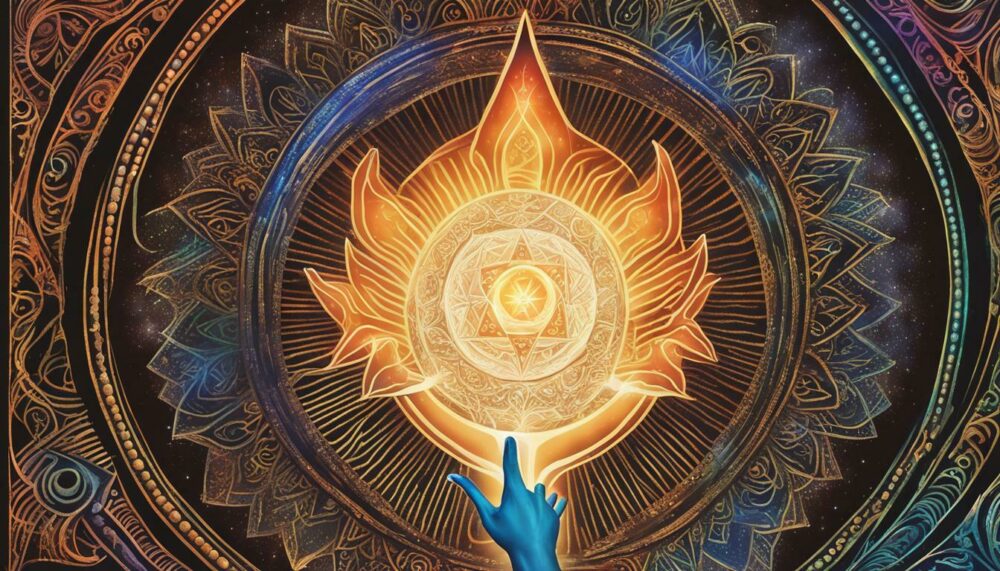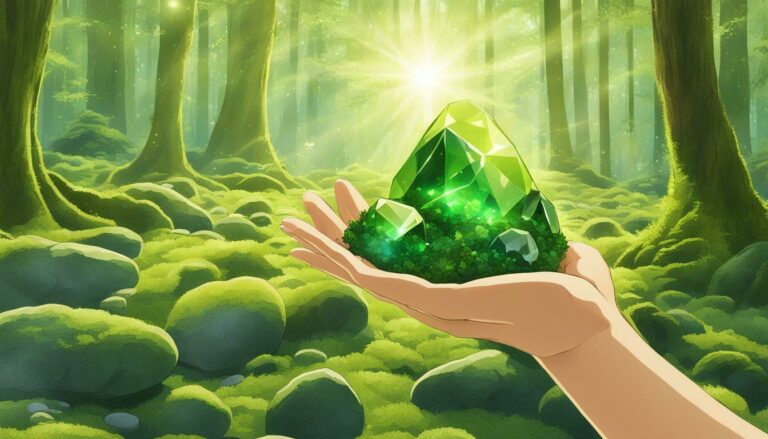Uncover the Mysteries: What Religion is Chakra Revealed
Chakra is a term that has been used in various spiritual and religious contexts. It is a Sanskrit word meaning “wheel” or “disk,” and it is often associated with the body’s energy centers. But what religion is chakra really a part of? In this article, we’ll explore the origins and concepts of chakra and its connections to various spiritual traditions.
Table of Contents
Key Takeaways:
- The term chakra comes from Sanskrit and means “wheel” or “disk.”
- Chakra is associated with the body’s energy centers and is used in various spiritual and religious contexts.
- We’ll explore the connections between chakra and Hinduism, Buddhism, Jainism, and New Age spirituality.
The Origins and Concept of Chakra
Are you curious about the origins and concept of chakra? The word chakra comes from the Sanskrit language, meaning “wheel” or “circle.” Chakra refers to the energy centers located throughout the body, and the concept originated in ancient Indian traditions.
The chakra energy system has been used to explain the flow of energy in the body and how it affects physical, emotional, and spiritual health. The energy flowing through chakras is believed to help maintain balance and promote overall wellbeing.
The Origins of Chakra
The concept of chakra was first documented in the ancient Hindu texts, the Vedas. It describes a system of seven chakras, each located along the spine, from the base to the crown of the head. The chakras are believed to be connected to specific bodily functions and emotions.
As the concept of chakra spread across the East, it became an integral part of Buddhism and Jainism, with each tradition interpreting and using chakras in their own unique ways.
The Concept of Chakra
Chakras are thought to be spinning wheels of energy that correspond to different areas of the body. Each chakra is associated with a specific color, symbol, and vibration frequency.
The seven chakras are:
- The Root Chakra: located at the base of the spine, associated with grounding and survival instincts.
- The Sacral Chakra: located in the lower abdomen, associated with emotions, creativity, and sexuality.
- The Solar Plexus Chakra: located in the upper abdomen, associated with personal power and self-esteem.
- The Heart Chakra: located in the center of the chest, associated with love, compassion, and relationships.
- The Throat Chakra: located in the throat, associated with communication, self-expression, and creativity.
- The Third Eye Chakra: located in the center of the forehead, associated with intuition, insight, and spiritual awareness.
- The Crown Chakra: located at the top of the head, associated with consciousness, enlightenment, and spirituality.
The chakra system has become a popular topic in New Age spirituality, with many people using chakra healing practices to balance their energy centers and improve their overall wellbeing.
Understanding the origins and concept of chakra can help you unlock the mysteries of this ancient and powerful practice. By learning more about the chakra energy system, you can tap into its transformative power and improve your physical, emotional, and spiritual health.
Chakra and Hinduism
In Hinduism, chakras are believed to be the energy centers of the body that regulate physical, mental, and spiritual well-being. The concept of chakras can be traced back to ancient texts, including the Vedas, the Upanishads, and the Yoga Sutras.
According to Hindu beliefs, there are seven main chakras located along the spinal column, each corresponding to a specific color and element. These chakras are named Muladhara, Svadhisthana, Manipura, Anahata, Vishuddha, Ajna, and Sahasrara.
is an important aspect of Hindu tradition, aimed at balancing and activating these energy centers. Through meditation, individuals aim to awaken the Kundalini energy, which is believed to be coiled at the base of the spine, and to channel it through the chakras towards spiritual enlightenment.
It is believed that each chakra governs specific physical, emotional, and mental functions. For example, the Muladhara chakra is associated with the sense of security and grounding, while the Anahata chakra is associated with the heart and the ability to love and connect with others.
Chakra healing practices, including the use of gemstones, aromatherapy, and sound therapy, are also prevalent in Hindu tradition. These practices aim to restore balance and harmony to the chakras, promoting overall well-being.
Chakra and Hindu Deities
In Hinduism, each chakra is associated with a specific deity or divine energy. For example, the Muladhara chakra is associated with the god Ganesha, while the Ajna chakra is associated with the god Shiva.
By invoking these deities through meditation and chanting, individuals aim to awaken and balance the corresponding chakra, gaining spiritual insight and connection to the divine.
Chakra in Buddhism and Jainism
The concept of chakra is widespread and not limited to Hinduism. Buddhism also acknowledges the existence of chakras and their role in spiritual well-being. According to Buddhist teachings, chakras are energy centers of the body and can be opened or blocked depending on one’s actions and thoughts. Each chakra is associated with a specific emotion, and by meditation, one can identify and balance these emotions, leading to a more balanced and peaceful life.
In Jainism, the concept of chakra is related to the body’s physical structure. Jains believe that the body has seven layers of tissue, with each layer having a corresponding chakra. These chakras are responsible for the proper functioning of specific internal organs and ensure physical and mental harmony. Jainism also emphasizes meditation and self-awareness to balance these chakras and achieve inner peace and health.
While the concept of chakra may have different interpretations and applications in various religions, the basic principle remains the same – the body’s energy centers are essential for physical, emotional, and spiritual well-being.
Chakra in New Age Spirituality
In modern times, chakra has been interpreted through the lens of New Age spirituality. This movement is focused on healing and personal growth, and chakra plays a significant role in these practices.
Chakra healing practices involve balancing and clearing the chakras to promote physical, emotional, and spiritual well-being. This can be achieved through various methods, including meditation, visualization, and energy work.
The modern interpretation of chakra often involves associating each chakra with a specific color and symbol, as well as assigning certain personality traits and emotions to each one.
For example, the root chakra, located at the base of the spine, is associated with the color red and represents grounding and stability. The crown chakra, located at the top of the head, is associated with the color violet and represents spiritual connection and enlightenment.
practices claim to have a profound effect on the mind, body, and spirit. Many people report feeling more balanced, energized, and grounded after practicing and energy work.
Overall, chakra plays a significant role in New Age spirituality and is highly valued for its ability to promote healing, personal growth, and spiritual connection.
Conclusion
Congratulations! You have uncovered the mysteries behind chakra and its place in different religions and spiritual practices. You now understand that chakra is a concept that originated in ancient Hindu and Buddhist traditions and has evolved into a modern, New Age interpretation.
Regardless of your personal beliefs or religion, chakra can offer valuable insights into your physical, emotional, and spiritual well-being. By focusing on balancing your chakras, you can achieve a deeper sense of inner peace, harmony, and connection to the universe.
Remember, the key to unlocking the power of your chakras is awareness, mindfulness, and regular practice. Whether you choose to incorporate , energy healing, or other chakra-balancing practices into your daily routine, trust in the process and allow yourself to be open to new possibilities.
So go forth with confidence, knowing that you have the knowledge and tools to harness the power of chakra and create a more fulfilling life for yourself.
FAQ
Q: What is chakra?
A: Chakra refers to the energy centers in the body that are believed to have the power to influence our physical, emotional, and spiritual well-being.
Q: How many chakras are there?
A: There are seven main chakras that are commonly discussed and understood. These are the Root Chakra, Sacral Chakra, Solar Plexus Chakra, Heart Chakra, Throat Chakra, Third Eye Chakra, and Crown Chakra.
Q: What is the purpose of balancing chakras?
A: Balancing chakras is believed to help restore harmony and balance within the body, mind, and spirit. It can support overall well-being and contribute to a sense of inner peace.
Q: How can I balance my chakras?
A: There are various methods to balance chakras, including meditation, yoga, energy healing techniques, sound therapy, and working with crystals or essential oils.
Q: Can chakra healing be beneficial for everyone?
A: Yes, can be beneficial for anyone interested in exploring and enhancing their overall well-being, regardless of their religious or spiritual beliefs. It is a holistic practice that can be tailored to individual needs.
Q: Is chakra healing connected to a specific religion?
A: While is not tied to any specific religion, it has associations with spiritual practices such as Hinduism and Buddhism. However, it can be practiced by people of all faiths or those who identify as spiritual but not religious.






